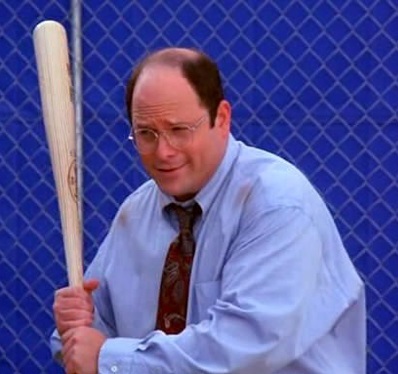The Battle of Cable Street was a series of clashes that took place at several locations In the inner East End, notably Cable Street on Sunday 4 October 1936. It was a clash between the Metropolitan Police, sent to protect a march by members of the British Union of Fascists led by Oswald Mosley, and various anti-fascist demonstrators, including local trade unionists, communists, anarchists, British Jews, and socialist groups. The majority of both marchers and counter-protesters travelled into the area for this purpose.
It had become known that the British Union of Fascists (BUF) were organising a march to take place on Sunday 4 October 1936, sending thousands of marchers dressed in their Blackshirt uniform through the heart of the East End (an area which then had a large Jewish population).
The fascists began to gather at Tower Hill from around 2pm, and there were a number of clashes around Tower Hill, Minories, Mansell Street and the vicinity.
The anti-fascist groups built roadblocks in an attempt to prevent the march from taking place. The barricades were constructed near the junction with Christian Street in Stepney, towards the west end of this long street. The main confrontation took place around Gardiner's department store in Whitechapel. An estimated 20,000 anti-fascist demonstrators turned out, and were met by 6,000–7,000 policemen (including mounted police), who attempted to clear the road to permit the march of 2,000–3,000 fascists to proceed. The demonstrators fought back with sticks, rocks, chair legs and other improvised weapons. Rubbish, rotten vegetables and the contents of chamber pots were thrown at the police by women in houses along the street.
The BUF marchers were dispersed towards Hyde Park instead while the anti-fascists fought with police. About 150 demonstrators were arrested, although some escaped with the help of other demonstrators. Around 175 people were injured including police, women and children. In the end, Mosley ordered the Blackshirts to retreat. Police escorted them back to central London.
Following the battle The Public Order Act of 1936 outlawed the wearing of political uniforms and forced organisers of large meetings and demonstrations to obtain police permission. Many of the arrested demonstrators reported harsh treatment at the hands of the police. The event is frequently cited by modern Anti-fascist movements as "...the moment at which British fascism was decisively defeated" although the BUF actually experienced an increase in membership after the event.
Many leading British communists were present at the Battle of Cable Street. Some examples include, Bill Alexander the commander of the International Brigade's British Battalion :spanish-republican: , Charlie Hutchison one of the liberators of Belsen concentration camp and the only black British volunteer to join the International Brigades, and pioneering journalist and war correspondent Alan Winnington , were all present and partially credit the battle for shaping their political beliefs. Communist activist Gladys Keable the future children's editor of the Morning Star , and her husband and fellow communist Bill Keable who would become the Morning Star's director, were both present at the Battle of Cable Street. The Morning Star described the Jewish Communist activist Max Levitas as the "last survivor of the Battle of Cable Street".
Between 1979 and 1983, a large mural depicting the battle was painted on the side of Stepney Town Hall. It stands in Cable Street, about 150 yards (140 m) west of Shadwell overground station. A red plaque in Dock Street commemorates the incident
Anti-fascist protests in London 1936 | BFI National Archive :af:
Comprehensive list of resources for those in need of an abortion :feminism:
Resources for Palestine :palestine-heart:
Here are some resourses on Prison Abolition :brick-police:
Foundations of Leninism :USSR:
:lenin-shining: :unity: :kropotkin-shining:
Anarchism and Other Essays :ancom:
Remember, sort by new you :LIB:
Follow the Hexbear twitter account :comrade-birdie:
THEORY; it’s good for what ails you (all kinds of tendencies inside!) :RIchard-D-Wolff:
COMMUNITY CALENDAR - AN EXPERIMENT IN PROMOTING USER ORGANIZING EFFORTS :af:
Come listen to music with your fellow Hexbears in Cy.tube :og-hex-bear:
Queer stuff? Come talk in the Queer version of the megathread ! :sicko-queer:
Monthly Neurodiverse Megathread and Monthly ND Venting Thread :Care-Comrade:
Join the fresh and beautiful batch of new comms:
!labour@hexbear.net :iww:
!emoji@hexbear.net :meow-anarchist: :meow-tankie:
!libre@hexbear.net :libretion:
Wmill's Moscow Problems :cyber-lenin:
So got one winner and it's comrade @raven so nice work :rat-salute:.
Previous answer
At the start, 1 inch of the yellow pencil gets smeared with wet paint. As the blue pencil is moved downward, a second inch of the blue pencil's length is smeared. After the next upward movement the second inch of the blue pencil smears a second inch of the yellow pencil.
Each pair of down-up moves of the blue pencil smears 1 more inch of each pencil. Five pairs of moves will smear 5 inches. This, together with the initial inch, makes 6 inches for each pencil.
A basket of mushrooms
A woman was carrying a basket of mushrooms to market when a passerby bumped her. She dropped the basket and all the mushrooms fell into mud. The passerby, wishing to pay for her loss, asked:
"How many mushrooms were in your basket?"
"I don't remember exactly," the woman replied, "but I do recall that whether I divided the mushrooms by 2, 3, 4, 5, or 6, there was always 1 mushroom left over. When I took the mushrooms out in groups of 7, I emptied the basket."
What is the least number of mushrooms that got ruined?
Like usual remember to have fun :soviet-heart: and dm @Wmill the answer.
It seems my electric kettle is about to die from old age :fidel-salute-big: to a real one
Remember nerds, Churchill was a big fan of fascism, he would praise Mussolini's Italy and tried to ally him, he only oppose the axis on geopolitical reasons
@aaaaaaadjsf @Abraxiel @Arahnya @bbnh69420 @CARCOSA @CDommunist @ClathrateG @ClimateChangeAnxiety @clover @comi @ComradeCmdrPiggy @CopsDyingIsGood @crime @DashEightMate @DasKarlBarx @DeathToBritain @Dirt_Owl @Eco @ella @el_principito @EmmaGoldman @FunkyStuff @GalaxyBrain @Grownbravy @inshallah2 @JamesConeZone @Kanna @Koa_lala @LeftistJerrySeinfeld @Lenins2ndAccount @LeninWeave @marxisthayaca @MaybeNickCage @Ossay @plantifa @PM_ME_YOUR_FOUCAULTS @PorkrollPosadist @PurrLure @Redcuban1959 @REallyN @Rem @renamon @riffraff_diktat @RoseColoredVoid @Sandinband @Shitbird @SorosFootSoldier @TheGhostOfTomJoad @TrollBoy @viva_la_juche @Wmill @wtypstanaccount04 @Zoift
thankfully i only lost a laptop charger to the flood
The real Tea with Mussolini hours going on now https://m.imdb.com/title/tt0120857/?ref_=ext_shr_lnk. A popular film your mom probably watched that openly brags about Churchill's fascist sympathies in mainstream culture. It also has that witch from Harry Potter played by Maggie Smith.
Even the fascism aside, a Br*tish-Ital*an alliance is cursed as hell.
Also, I'm glad your house and cats and everything weren't too affected by the flooding :stalin-heart:
do i want to go to work? no
will i go to work? yes
will i do any work? no
i've been too busy to be on the site lately but i feel like the trajectory we've been on the last week or so is "coming back around to remembering why volcel police is important" on the volcel-to-too-much-horny-posting cycle.
Maybe owls are just fat falcons and I've been living a lie :ohnoes:
Respect to anyone who goes off on a tear, but doesnt delete their posts out of embarrassment, you’re an mvp and the only ones we really get over.
Why are you all sucking china’s cock? I thought this site was volcel.
Literally you 2 minutes ago
It still has capitalism and oppresses indigenous people in hong kong, tibet, and singapore.
You came into the wrong neighborhood bitch!
starts kicking your shins
:xi-reactionary-spotted:
the two other lurker cowards should make accounts so they can get bullied
Sitting next to my partner while she’s on tik tok has convinced me If I had stalin powers I would remove all trace of Harry Potter ever existing
Just filled up a gas tank for the first time in like 4 years. This sucks, why do people like cars so much
Bad insomnia and can't have marijuana for it cause of the surgery I had yesterday :sadness:
depression is a fuck. i'm not sad you piece of shit body or whatever. just let me enjoy things.
i'd be mad, but i feel nothing right now - super fucking lame.








